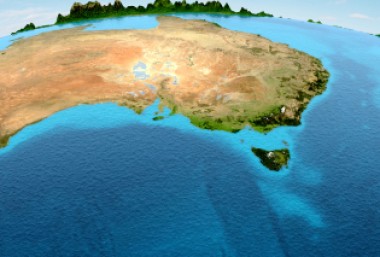Nicholas J held that an isolated nucleic acid, which may have precisely the same chemical composition and structure as that found in human cells, constituted an invention according to Australian Patent law. This is the first Australian Court case on the patentability of isolated human genes.
Background
Cancer Voices Australia (CVA), an organisation representing cancer patients, challenged Myriad Genetics' patent relating to the BRCA1 gene. This gene is a human breast and ovarian cancer disposing gene.
The only question raised by CVA was whether isolated DNA and RNA was patentable subject matter. CVA alleged the requirements of the Australian Patents Act were not met because the isolated nucleic acid was not materially different to the nucleic acid as it occurred in nature. According to CVA, naturally occurring DNA and RNA, even in isolated forms, were products of nature that could not form the basis of a valid patent. Myriad disagreed.
The claims in question related to isolated nucleic acids (DNA or RNA) that encode the BRCA1 gene. "Isolated" in this context implied that the nucleic acid was removed from its natural cellular environment and separated from the other cellular components.
Reasons for the decision
Nicholas J emphasised the isolated nature of claimed nucleic acids. Naturally occurring DNA and RNA, as they exist in cells, were not within the scope of the claims. He also pointed out that the claims related to tangible material, e.g. merely writing out the claimed genetic sequence would not infringe the claims.
The leading case on patentable subject matter, National Research Development Corporation v Commissioner of Patents (NRDC), allows for patents on artificially created products with new and useful effects that are of economic significance. When determining if subject matter was patentable, the Court was not required to ask if the subject matter is a "product of nature". Nor did it need to ask if the subject matter is "markedly different" to something that already exists in nature.
The "artificial state" required by theNRDCtest can manifest itself in different ways. For example, the physical properties of a naturally occurring material may change as a result of isolation. However, even if the physical properties did not change, the removal of the material from its natural environment and its separation from other cellular components may still result in an artificial state of affairs.
Nicholas J did not think the patentability of isolated nucleic acids turned upon what changes had been made to the chemical composition of the substances as a result of isolation. In any case, the claims under consideration did not require that the isolated nucleic acids differ from those in a cell so far as their chemical composition was concerned.
The three main factors influencing his decision were
- NRDC was deliberate in its use of expansive language when discussing patentable subject matter.
- Extracting and purifying nucleic acids involves the destruction of the cell and the removal of other material originally present with the nucleic acid. In the absence of human intervention, naturally occurring nucleic acid does not exist outside the cell, and "isolated" nucleic acid does not exist inside a cell.
- Isolation of a particular micro-organism may require immense research and intellectual effort. It would lead to very odd results if a person whose skill and effort culminated in the isolation of a micro-organism could not be rewarded by the grant of patent. This lack of patent would be a mistake and inconsistent with the purposes of the Patents Act.
The bigger picture
Nicholas J went on to evaluate his conclusion in light of recent developments in Australia and overseas. Allowing gene patents was consistent with the long standing practice of IP Australia. In addition, the Australian Government had not amended the Patents Act to exclude gene patents, despite several recent patent reviews and reforms.
Looking to other jurisdictions, he noted that the UK and many other parts of Europe allowed patents for isolated DNA and isolated RNA. Both parties also referred to recent decision by the US Federal Court in The Association for Molecular Pathology v USPTO and Myriad, which was concerned with similar gene patenting issues. Nicholas J considered that the US position was unsettled and he did not think the US Myriad decision provided any direct assistance to either side in the present case. In particular, Australian patent law was different to US patent law, and different evidence was provided in each case.
Nicholas J also commented that the new experimental use defence provisions introduced as part of the "Raising the Bar" legislation negated one of CVA's main arguments, i.e. that patenting biological materials impacts future research and development of new diagnostic and therapeutic technologies. He also commented that the amendment to the definition of "useful" in the Australian Patents Act will make it harder to obtain patent protection for expressed sequence tags "ESTs".
In New Zealand ...
The Intellectual Property Office of New Zealand routinely accepts claims directed to isolated nucleic acids. However, the patentability of these types of claims has never been challenged in Court.
The key factors that influenced the decision in this case would seem to apply equally in New Zealand. The definition of invention in both countries is very similar, and although it is an Australian case, NRDC is considered our leading case on patentable subject matter. Also, as in Australia, the New Zealand Patents Act has been the subject of recent review. Despite extensive consideration, the Government has declined to exclude gene patents for the scope of eligible subject matter.





